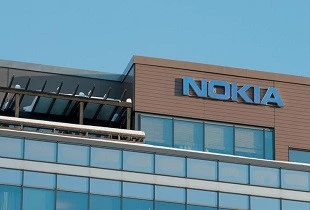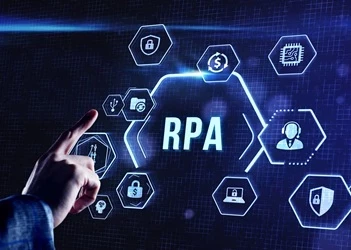Overseeing the wind of change in business
Siemens Gamesa’s Mark Ghibril discusses the renewable energy manufacturer’s approach to process management and digital transformation in the aftermath of its creation from a merger in 2017
Add bookmark
In the four years since Gamesa and Siemens Wind Power came together to form wind engineering company Siemens Gamesa, the renewable energy industry has continued to grow quickly, while emerging innovations in wind turbine technology has made the market increasingly competitive.
 PEX Network caught up with Mark Ghibril, global vice-president – head of regional CIOs and user engagement experience center at Siemens Gamesa, ahead of his appearance as a panelist at PEX Live: Intelligent Automation and RPA 2021, to find out how the company's processes were transformed and formalized in the aftermath of the 2017 merger.
PEX Network caught up with Mark Ghibril, global vice-president – head of regional CIOs and user engagement experience center at Siemens Gamesa, ahead of his appearance as a panelist at PEX Live: Intelligent Automation and RPA 2021, to find out how the company's processes were transformed and formalized in the aftermath of the 2017 merger.
PEX Network: What hurdles did you face in standardizing processes following the merger to encourage the new enterprise to think and act as one?
Mark Ghibril: When the two companies merged in April 2017, both came with various legacy tools and processes. That summer, we started holding IT workshops and defined our journey to transform our IT tools landscape based on standardized and harmonized processes.
Early on, we identified that we could not lead with one legacy landscape over the other, as both were outdated and required new investment. Instead, we opted for a greenfield approach to our digital transformation journey. We attempted to digitalize our company from the inside ensuring that all global operations acted as one company.
It was a great opportunity to start from scratch. The legacy companies were operating outdated technologies and a diverse set of processes that did not support the business's goal of being the leading pioneer in the global renewable energy market.
PEX Network: How did you enable conformity and adherence on a vast change management program covering numerous offices and locations?
MG: We created a dedicated team and a competence center which brought our employees to the center of everything we do in IT. This enhanced adoption and acceptance of new tools helped our transformation projects and programs by bringing users and employees along on our very complex journey.
Through physical and virtual town halls and road shows, we presented the argument that change is positive, introduced the new tools it would bring and explained the benefits for the business.
In every change project, we onboarded a number of change agents who helped us explain the benefits and encouraged positive outcomes and engagement from change. This helped us to drive each initiative, especially in the face of disruptions caused by the Covid-19 pandemic.
PEX Network: One of the key themes of the panel you will participate in at PEX Live: Intelligent Automation and RPA 2021 focuses on the “serious” nature of change management and digital transformation. Can you tell us about your approach to managing the vast resources, differing capabilities and the large number of requests required to carry out these types of initiatives?
MG: We made a clear decision to go as far as possible to fully digitalize our systems to minimize interfaces to other systems. This helped us to drive automation much more quickly because we are able to have standardized processes on a global level, making it simpler, quicker and more effective.
One of the main challenge we faced was the availability of people required to run such a large change project. Time, effort and dedication were needed from people who are experts in their field. It’s easy to forget, however, that you can’t remove people from their day-to-day work completely. We still need to make money by selling wind turbines, so we had to continue supporting the immediate needs of the business too.
To combat this and reduce the time required from each person, we created a business and IT collaboration board, which came together to decide on the changes that would be allowed to proceed as defined by the standards defined during the design phase of the project.
PEX Network: Is there ever an end goal for a digital transformation or change management program?
MG: Transformation never stops because of continuous business demands, requirements and process automation improvements. But now we are future-proof, if we want to transform a tool or process in a particular department, we only need to do it once. This is because we have global standardized processes, compared to in the past when we had several different systems and hundreds of different processes.
PEX Network: What recommendations would you offer to fellow process excellence professionals looking to automate at scale?
MG: If you want to automate at scale, start with process harmonization. If the different parts of a business are not initially aligned on what a process should look like, then you cannot automate at scale.
Define the links between all processes and tools, so that you are aware of what can be automated. If the tools do not interact with each other, or if you have different processes on different tools, it can become really hard and expensive to automate.
Finally, our experience in RPA is that if you start with one automation tool that works for you, stick with it, because you will not be able to migrate from one automation tool to another cheaply.
Join Mark Ghibril, along with experts from Nokia and PepsiCo, for “How to get Serious with Business Transformations and Automate at Scale”, which will take place as part of PEX Network’s free-to-attend online event PEX Live: Intelligent Automation and RPA 2021, taking place on 22-24 June 2021.


























